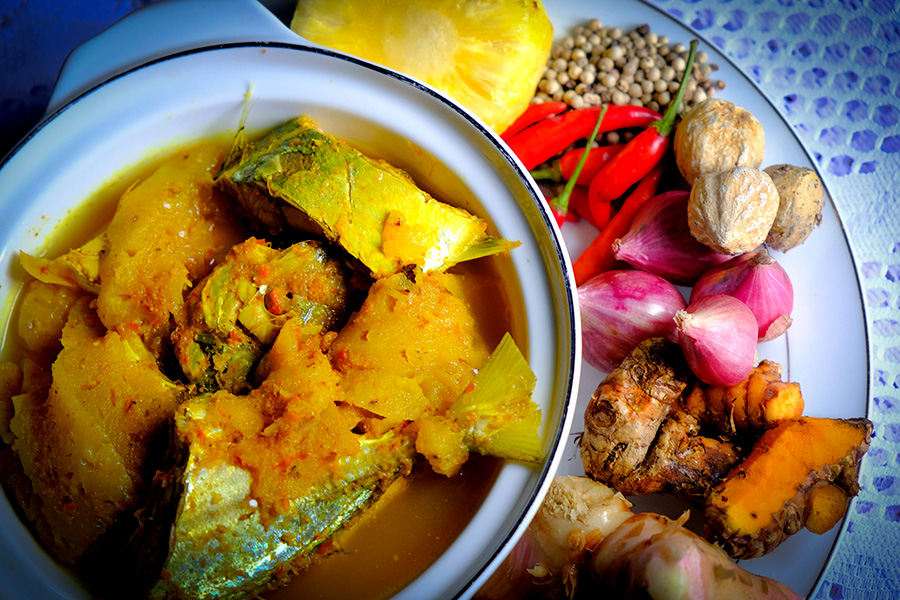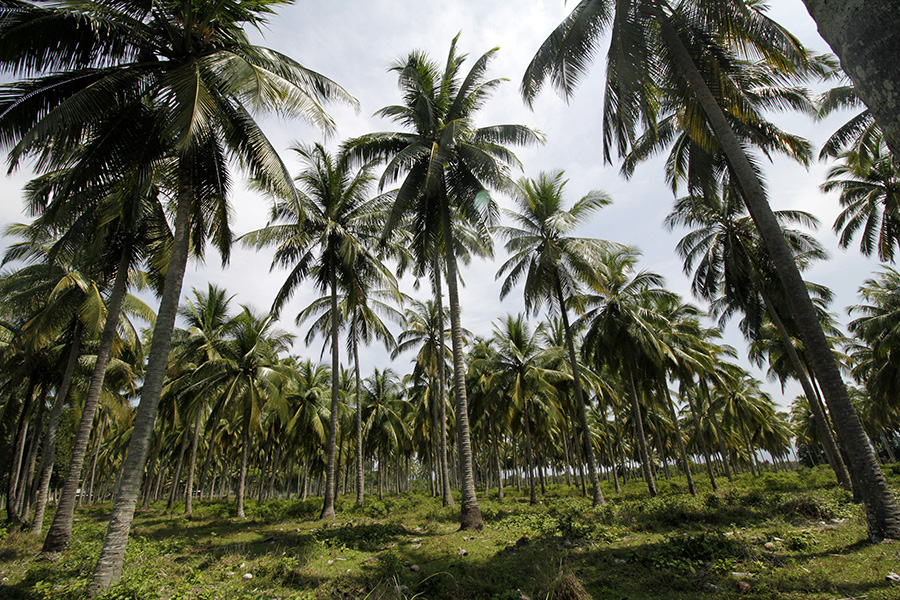
- Scarce supplies and high prices for cooking oil have sparked recent widespread public criticism in Indonesia, the world’s top producer of palm oil.
- Yet before the introduction of the African oil palm into Indonesia, communities across the archipelago were producing the oil they needed from coconuts.
- Mongabay Indonesia’s Taufik Wijaya recalls this practice from his childhood in South Sumatra, when the Western-influenced diet of deep-fried food hadn’t yet taken hold.
- This post is a commentary. The views expressed are those of the author, not necessarily of Mongabay.
On Sunday mornings, my mother would grate coconut meat. She would squeeze the milk from the grated shreds, then cook the coconut milk in a saucepan over a medium heat. After three hours of cooking, she’d scoop off the oil that appeared at the surface, until all that remained were the galendo, the dregs, which I’d mix with rice for lunch. Galendo is a Sundanese word used in West Java province meaning a dish made from coconut dregs.
That was in 1978, when our family in Palembang, the biggest city in South Sumatra province, had trouble buying cooking oil made from copra, or dried coconut meat. Not only was it expensive; back then, cooking oil, like rice and sugar, could be hard to find at the market.
From the mid-1960s to the early 1980s, during the first half of the New Order era of then-President Suharto, the Indonesian people went through a bleak period of food insecurity. Indonesia, an agricultural country, was one of the world’s biggest importers of rice. Only in 1984 could the nation claim to have reached self-sufficiency in rice production.
Perhaps it was not just my own mother who made coconut oil. I believe millions of women in Indonesia at that time made coconut oil for their family’s needs.
My mother was frugal with coconut oil. She used very little when she stir-fried vegetables or chili sauce. Meanwhile, fish, meat, tempeh and tofu were often grilled or cooked in sauce.
“We have been using coconut oil for a long time,” my mother told me. “When I was little, I often helped your grandmother make coconut oil. The Dutch and Japanese also used coconut oil when they colonized us.”
Years later, cooking oil made from palm oil was sold in traditional markets. It was affordable, so my mother stopped making coconut oil and instead bought cooking oil made from palm oil.
I have continued the tradition of consuming cooking oil from palm oil.
In recent weeks, numerous media outlets have carried stories about how homemakers and food traders in Indonesia have been “screaming” over the scarcity of cooking oil. The government appears to be having a hard time dealing with the cooking oil shortage. It shows that most Indonesians still need cooking oil.
Read more: For Indonesians, palm oil is everywhere but on supermarket shelves
Some say that in a country like Indonesia, a cooking oil shortage makes no sense. Indonesia is the world’s top palm oil producer, with many millions of hectares of land planted with oil palm (Elaeis guineensis), the tree whose bright-orange fruit is processed into palm oil. Indonesia produced 46.88 million tons of crude palm oil in 2021, exporting much of it across the world while also using plenty at home.

In my travels to a number of hamlets in Bangka, an island off the southeast coast of Sumatra, I found a great number of homemakers in traditional communities who aren’t “screaming” over hard times for a lack of palm oil-based cooking oil.
“We don’t worry about cooking oil from the store,” said Ajam, 65, a resident of Gunung Pelawan village. “We make our own cooking oil. We’ve been doing it for a very long time.” She showed me a spread of coconut meat being dried in the sun to make copra.
“It’s easy to make,” she said. “Finely mince the dried coconut meat. Then cook it until the oil comes out. Let it cool and strain it.”
I have observed the tradition of making cooking oil from coconut oil in the districts of Bangka, West Bangka, Central Bangka and South Bangka, as well as on the eastern coastline of Sumatra, in South Sumatra and Jambi provinces.
In communities that have a tradition of making cooking oil, they would surely be planting coconut trees. The trees are planted as a plantation stretched along the coast, or grown with other plants in home gardens.
Some of these people make a living from growing coconuts. They sell the ripe coconuts, the ones that drop to the ground.

Deep-frying is one cooking technique that requires plenty of cooking oil. This cooking method developed in the West, with things like french fries, chicken, and donuts served by fast-food outlets. Deep-frying then developed in Indonesia. Street vendors picked it up, and restaurants followed. Deep-frying is also done in family homes across the world, including in Indonesia.
Looking into the past, it is difficult to find a dish in the Indonesian archipelago that was traditionally fried. Food was generally boiled, steamed or grilled. Although influenced by culinary traditions from India and the Middle East, oils were used as a food additive, not for frying.
For sure, a number of cuisines in the archipelago have developed frying. For instance, in South Sumatra, there is the Palembang delicacy pempek, fish dumpling with tamarind sauce. It used to be steamed, grilled or had gravy. Now it’s mainly fried.
It can be said that frying is a Western influence found in fast food and the cooking oil saturating the market. This is in line with the expansion of oil palm plantations that produce the components for cooking oil.
Every household in Indonesia needs cooking oil. Cooking has become a basic need.

I assume the scarcity of cooking oil that has caused homemaking moms to “scream” is one piece of evidence from the producers or owners of oil palm plantations that Indonesia can’t live without oil palm plantations.
Perhaps some homemakers would “scream” if a number of other palm oil-based products became scarce, like soap, shampoo and lipstick.
On the other hand, the presence of oil palm plantations keeps increasing. Millions of hectares of farmland and forests have been converted into oil palm plantations. There was even an effort to reclassify oil palm, a plant not native to Indonesia, as a forest crop, which would have enabled even more land to be converted to oil palm under the guise of reforestation.
In this situation, even if all homemakers in Indonesia “scream,” it would not free oil palm plantations from their multitude of problems, from environmental destruction and labor abuses to the failure to provide smallholdings to local communities and widespread land disputes.
It would be better for Indonesians to reengage with their local wisdom so that their lives are no longer dependent on industrial products, particularly in the realm of food — knowledge that is still safeguarded by Indigenous communities in Indonesia.
I believe that without palm oil-based cooking oil, Indonesians can still cook and bathe.
Banner image: Oil palm harvest in Indonesia. Image by Iddy Farmer/CIFOR via Flickr (CC BY-NC-ND 2.0).
Taufik Wijaya is literary writer, theater worker and Mongabay reporter based in Palembang, South Sumatra.
This commentary was first published here on our Indonesian site on March 23, 2022.
Indonesians, too reliant on palm oil, should go back to their roots (commentary)
Source: Trends News

0 Comments